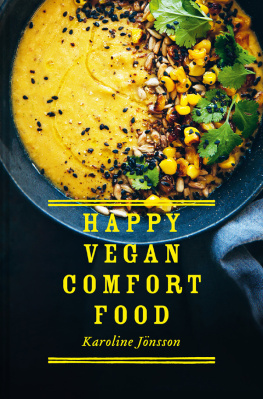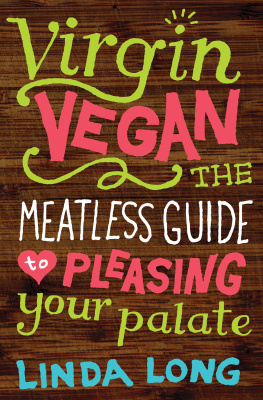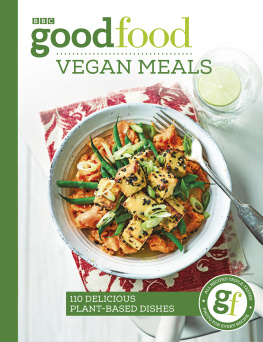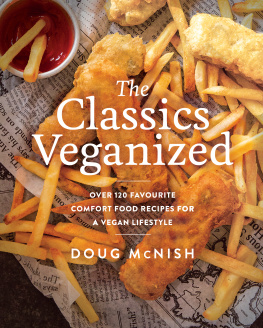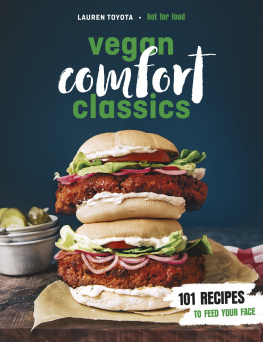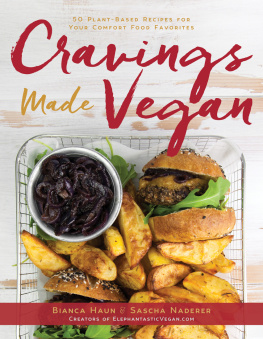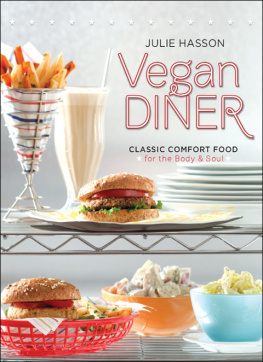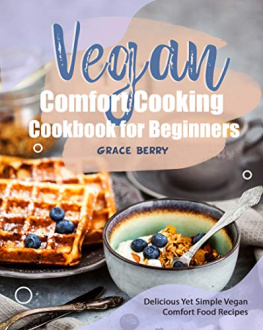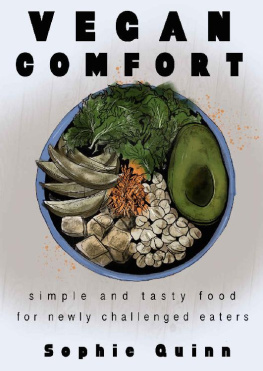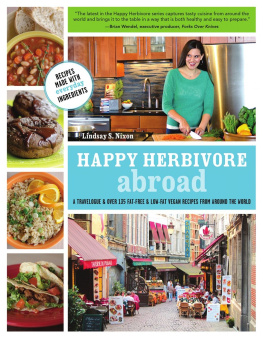Contents
Guide





FOREWORD
KAROLINE JNSSON
Id like to start this book by being completely honest with you and confessing that from 2012 to 2014 I was actually quite hungry. These were my first two years as a vegan and I was lost in the spinach.
Of course, its not true that you cant get full from plant-based food or that the body wont feel satisfied and happy. But for me, who previously had often used the trinity of meat, sauce and potato as a starting point, it was sometimes difficult and time-consuming to translate this into a diet based on plants. Moreover, I had just discovered my new great interest in cooking and was therefore enthusiastically trying out different crazy ingredients, flavour combinations and other concoctions. Sometimes it turned out well but often the result was just so-so. Vegetable fritters often had a soft, crumbling texture, and nutritious filling pulses (legumes) hadnt yet become a staple in my diet.
But then something happened. Because during those two years I came to understand this new cuisine and learn new ways to compose meals and above all, how to cook good everyday vegan food. I had picked up a repertoire of dishes that I could master, that always turned out delicious and filling and that I could come back to week after week. From these fail-proof recipes I was able to use the concept, cooking methods and flavour combinations to develop new dishes, and from then on, a whole new world of food opened its doors for me.
Looking back, I wish that I had had access to good recipes during that time instead of having to improvise every day. But even though its not that long ago, the vegan world looked completely different then. The interest in plant-based food was still in its infancy and it was significantly harder to find good vegan products and dinner inspiration, as well as vegan food when eating out.
Happy Vegan Comfort Food is the book that I needed when I decided to quit eating animals. It would have saved me years of finding my way in the green jungle. In a way, this might be my most personal book so far, because here you really are invited to my table to enjoy dinner, breakfast and snacks. Ive gathered together the food that we al-ways come back to at home. The dishes that always work, always taste good and that we always crave: food that is filling and that warms the soul and the heart happy vegan comfort food!
INTRODUCTION
VEGAN COMFORT FOOD
from apple picking to rhubarb buds
I live in an old house in the countryside in southern Sweden. Its on a small hill with a rolling landscape of fields and horse pastures that border our little farm. In October when the autumn storms arrive, the wind from the West rages so that the roof creaks and a draught comes up between the floorboards.
Everyone I know who lives like this in an old house in the countryside gets up every morning, lights a fire in at least one stove and then feeds the fire with logs until its time to go to bed again. Otherwise its cold. So if anyone should write a book about warming comfort food, it feels right that it should be one of us country folk who often wakes up with a cold nose or walks around in woolly socks every day for four months in a row. For me its a given that food and drink should be warming from the inside out during the cold season.
Here, far up in the north, we live in a climate with distinct seasonal changes. When I first started to develop recipes for this book I had autumn in mind, thinking about the food youd want to eat when it starts getting darker and you snuggle up indoors while the rain is drumming on the window and the wind is whistling outside. But I soon realised that these recipes are also useful throughout winter and to put it bluntly, its actually pretty cold until May.
For eight months each year, between apple picking and seeing the first rhubarb buds, we are exposed to cold weather, wind and darkness, and our appetite for warming food intensifies. Around September I tend to notice that Im no longer satisfied with new potato salads dressed with lemon vinaigrette or steamed summer veg with a dollop of dairy-free butter. This is when I start to crave spicy stews, hearty soups and roasted root vegetables dunked in rich mayonnaise. Food should no longer be light and cooling for the summer heat, but instead should fulfil the opposite function warming up a cold body.
Its rather curious that our vegetables seem to follow the same cycle. The bursting-with-chlorophyll vegetables that sprout up when the spring sun starts to cast its warming rays in April dont need a lot of cooking, just a light frying or steaming, or can even be eaten raw. Then we eat our way through summer with lots of fresh food. But when autumn arrives the root vegetables have just grown big enough, and its time to dig up the potatoes, store the pumpkins and hang the onions up to dry. These ingredients will see us through the autumn and winter months, when they take on that hearty character the body is craving. Isnt it fantastic how everything seems to be linked together?

I
THE PLANT-BASED KITCHEN
The recipes in this book are designed to be adaptable you can vary the ingredients and you will soon start to develop your own dishes. For successful everyday cooking it helps if youre able to be spontaneous and flexible in the kitchen. Therefore you will see that Ive suggested alternative ingredients for many of the recipes. This means that the dishes can change with the seasons and can be made even if you werent able to buy a specific ingredient.
The ability to be flexible in the kitchen means that you will get to eat more varied food while minimising waste. It will also make you a better cook. And since my aim is to help everyone to cook such delicious plant-based food that animal products are redundant, this chapter begins with a lesson in composing a plant-based meal.

BALANCE
the basic tastes
Food that is full of flavour that includes most of the five basic taste elements is complex and is perceived by the eater as satisfying. But perhaps the biggest challenge when creating recipes is that its often the little details that make all the difference. Just a gram of salt can determine whether a whole meal is enhanced or just tastes OK. And as if that wasnt tricky enough, we all have different taste preferences.

